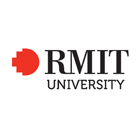Master of Science (Applied Physics)
- Home
- Courses
- RMIT University (Royal Melbourne Institute of Technology University)
- Master of Science (Applied Physics)
Master of Science (Applied Physics)
Develop your advanced research skills and contribute to new developments in applied physics. Our wide-ranging applied physics expertise gives you opportunities to develop specialist knowledge and honed research skills in your chosen area. Under expert supervision, you will join researchers already active in: advanced characterisation techniques applied geophysics biophysics and…
Categories
COURSE DESCRIPTION
Develop your advanced research skills and contribute to new developments in applied physics.
Our wide-ranging applied physics expertise gives you opportunities to develop specialist knowledge and honed research skills in your chosen area.
Under expert supervision, you will join researchers already active in:
advanced characterisation techniques
applied geophysics
biophysics and biological physics
computational modelling of matter
condensed matter
functional coatings
industrial and building acoustics
molecular transport in biological membranes
nano materials and nano fluidics
quantum information and quantum optics
radiation and medical physics
soft matter
superconductivity
This master degree may be undertaken in a project or thesis mode.
Career
A masters degree will provide you with a foundation for further studies into a PhD and employment in senior leadership and management research-based positions in a variety of government, non-government and corporate organisations.
EDUCATIONAL INSTITUTION
Since its establishment in 1887, Royal Melbourne Institute of Technology University (RMIT) has been meeting the needs of the community surrounding it. Originally a Working Men’s College, RMIT showed its flexibility during World War Two, training over 20,000 servicemen in communications to help with the war effort.Now, it is a true pioneer in international education, championing cross-border study opportunities with campuses in various countries. Granted formal university status in 1992, RMIT is ranked 21st in the world for universities that are less than 50 years old.RMIT is the largest higher education institution in Australia, currently with more than 82,000 students. With nearly 20% of those students coming from overseas, it is a university that truly welcomes diversity and is a melting pot of different cultures. RMIT has three campuses in Vietnam, a European hub in Barcelona, an office in Indonesia, and partners with 200+ institutions in 42 countries to provide study opportunities worldwide.
Since its establishment in 1887, Royal Melbourne Institute of Technology University (RMIT) has been meeting the needs of the community surrounding it. Originally a Working Men’s College, RMIT showed its flexibility during World War Two, training over 20,000 servicemen in communications to help with the war effort.
Now, it is a true pioneer in international education, championing cross-border study opportunities with campuses in various countries. Granted formal university status in 1992, RMIT is ranked 21st in the world for universities that are less than 50 years old.
RMIT is the largest higher education institution in Australia, currently with more than 82,000 students. With nearly 20% of those students coming from overseas, it is a university that truly welcomes diversity and is a melting pot of different cultures. RMIT has three campuses in Vietnam, a European hub in Barcelona, an office in Indonesia, and partners with 200+ institutions in 42 countries to provide study opportunities worldwide.




